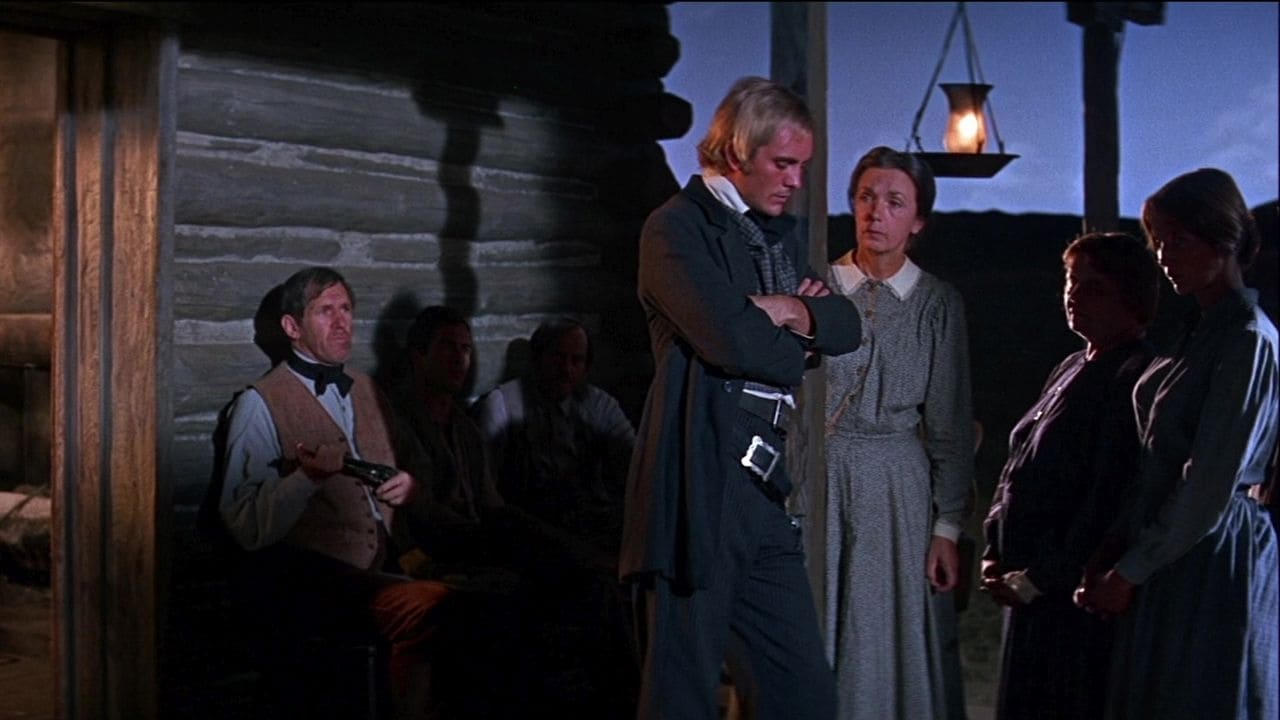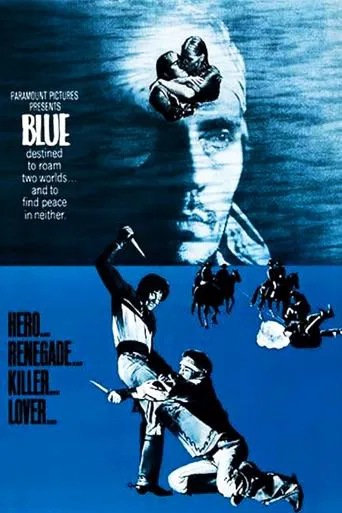

Silvio Narizzano mainly worked for TV but this movie and "why shoot the teacher"in the seventies are worth seeking out;the former told the story of a young teacher (Bud Cort),fresh from the university ,who winds up in middle Canada where he realizes that what he learned does not help much in a hostile nature ;although liked by his pupils ,he was ill at ease,an intruder in this rural God-forsaken world.Five years earlier,Azul's place is nowhere too;his parents were killed by Mexicans ,the chief of whom adopted him ;but his biological sons (from different mothers)never accepted him :he is too delicate,too gentle to live in this hyper macho world.Had they continued their political struggle against the French (as Juarez ' allies against Napoleon The Third? the screenplay does not mention them),Azul would perhaps have found a reason for this struggle which actually consists of pillage and rapes .All that deals with Ricardo Montalban and his wild bunch recall spaghetti western ,but it's not:the director was Canadian.On the other hand ,the scenes with the Americans would not be out of place in stuff like " friendly persuasion" with their shimmering colors ;the good doctor (played by Oscar-winner Karl Malden ) , his daughter (Joanna Pettet) and the villagers seem to come from another world,compared to the bestial brutes milieu in which Azul was nurtured.Actually ,born an English man (as Terence Stamp,whose restrained performance is in direct contrast with that of Fellini 's "Tommy Dammit" in "spirit of the dead" ,released the very same year),Azul is torn between the two worlds ;and the ending ,lyrical and epic,is really the only one which could have concluded this offbeat tale.
... View MoreThis kicks off a four-movie tribute to the recently-deceased Silvio Narizzano who, in spite of his Italian name and Canadian origins, worked almost exclusively in English-language films; he made his name with the Oscar-nominated "Swinging Sixties" hit GEORGY GIRL (1966) which briefly took him to Hollywood where – like his contemporary Sidney J. Furie with THE APPALOOSA (1966) – he found himself turning a very ordinary cowboy tale into a Western with pretensions. In fact, I had missed out on this one a couple of times on Italian TV over the years, owing perhaps to its bad rep (Leonard Maltin rates this a measly *1/2) and, thus, made for a surprising choice to be issued on DVD (albeit emerging a no-frills affair) from Paramount...but, for this same reason, was extremely well-served by the transfer that utilized a gorgeous print whose colors leapt right off the screen on my 40" HD-TV!In any case, this is a Western that, while not quite following the "Spaghetti" model (apart from the reasonably graphic violence), was still deemed an arty aberration (not least because it had British leads!) – stylistically, the film seemed to evoke the self-indulgent ONE-EYED JACKS (1961; down to recruiting Karl Malden for a major role!) whereas, thematically, it owed a good deal to HOMBRE (1967) with its racial issues and martyr hero. Its lack of critical and commercial success, for one thing, sent off star Terence Stamp (as much a brooding presence here – he is silent for the first half-hour or so, with the title itself a reference to the color of his eyes and, in fact, he goes by the name Azul i.e. Spanish for 'blue' – as Marlon Brando and Paul Newman in the two-mentioned films respectively) into a 10-year period of European wanderings mainly devoted to highbrow/obscure fare! For the record, it was originally intended for Robert Redford who, bailing out at the proverbial 11th hour, subsequently found himself slapped with a lawsuit by the studio for breach-of-contract! The cast includes a couple of other popular names from this era: Joanna Pettet (who had been one of THE GROUP {1966}, here affecting a convincing drawl – though her acting and Stamp's is too modern for the genre, this only adds to the inherently offbeat nature of the film) and Stathis Giallelis (if only in a minor role – he is dispatched early on – having been the lead in Elia Kazan's America, America {1963}). Rounding out the protagonists are Malden, ever-reliable while not particularly taxed by his role of Pettet's dad (a doctor and thus a leading member of the settlers) and Ricardo Montalban, excellent as Stamp's own bandit-leader father (albeit only a surrogate) who had singled him out as his successor but now is inevitably drawn towards a face-off with him.Typically, when he is prone to be civilized, the hero has to withstand backlash from both the whites for his 'animalistic' behavior (especially from Pettet's boyfriend, though the two men eventually make up and the latter is virtually made Stamp's lieutenant!) and his adoptive 'family' for turning on them (he killed a 'brother' who had tried to rape the heroine). With this in mind, the finale is properly tinged with tragic poignancy as son shoots father dead and is himself gunned down by an uncle! When Montalban threatens to decimate the entire community over what he takes to be Stamp's treason, the latter feels obligated to teach the settlers how to defend themselves: though booby traps are effectively laid along the stretch of beach where the battle is waged, the bandits' come-uppance is dealt a bit too quickly and overwhelmingly (with few losses among their own numbers!); incidentally, Pettet takes a nasty fall (clearly unintended) during her rush to comfort the dying Stamp which the director opted to retain for the finished version! In the end, the chief assets here emerge to be pictorial and aural – courtesy of Stanley Cortez' sprawling cinematography and Manos Hadjidakis' flavorful score respectively – and these go a long way towards smoothing over the obvious narrative deficiencies (in the form of clichéd characterization and situations). A curious footnote: the contemporaneous FADE IN, a made-for-TV effort about the movie-making business that starred Burt Reynolds and which would eventually be credited to the fictitious Alan Smithee, reportedly features behind-the-scenes footage from the set of BLUE!
... View MoreFor some reason I always looked back fondly on this film that I saw in the theater in the late '60s. However, when I watched it again almost 30 years later on VHS, I was really disappointed. Since I know now that lead actor Terrence Stamp grew up in England, I found his American/ Mexican character accent - at that time - not that believable. A few times he slipped back to his native British accent.This is one of those unusual films in which the good guy dies in the end. Many times, that makes for a more dramatic, memorable ending. Howevr, in this case, all it made for was a very unsatisfying finish. This is not something I'd eagerly wait another 30 years to see!
... View MoreAs a long-time Terence Stamp fan, I finally was able to rent this video after a long search. I don't care if Terence's cockney accent slipped through now and then. It didn't distract me from watching his beautiful performance as Azul/Blue, who finds it difficult to fit into either world: the Mexican world to which he belonged after his parents were killed and he was found by the "bandit" Ortega, or the world of the "gringo" from which he came. There was some residual "Billy Budd" quality in this film which may have been unintended on Stamp's part. It was a delight to see Stamp in this role -he is such a natural. The ending was somewhat enigmatic, but the filming of the last scenes in the river were beautiful, believable, and tragic.
... View More